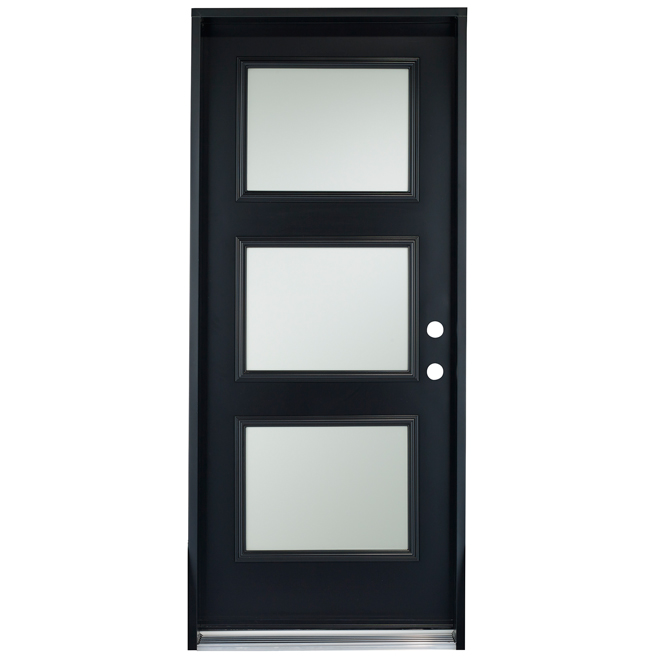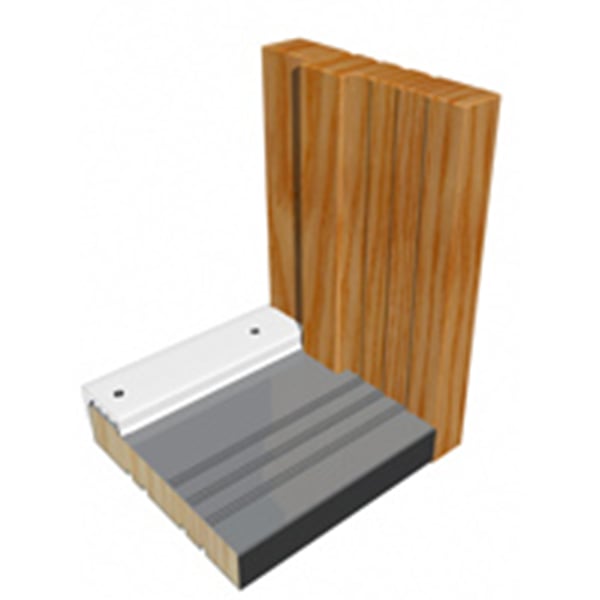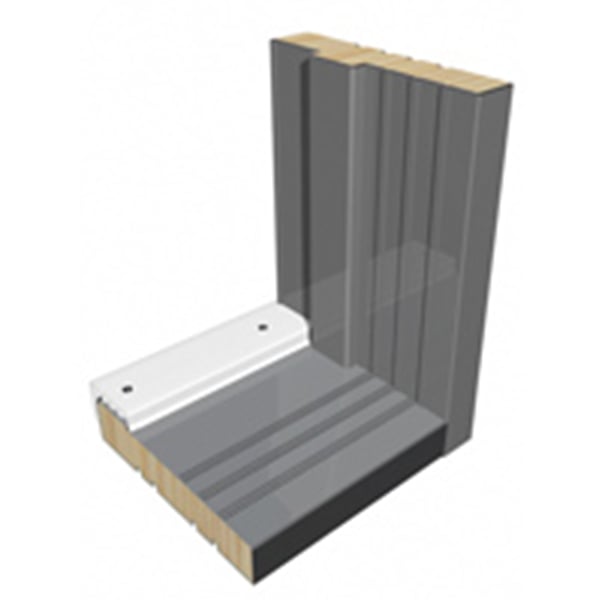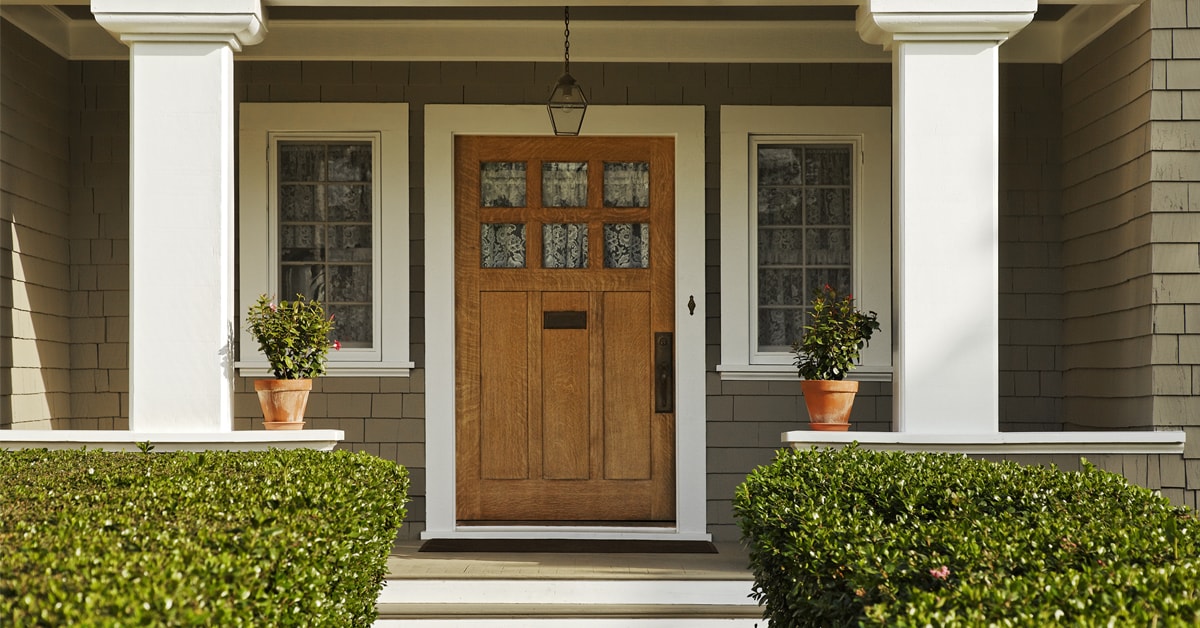Types of doors
There are five different types of exterior doors: steel, aluminum, wood, fibreglass, and PVC.
Doors are usually hybrids nowadays, which is to say they are constructed from a combination of materials. For example, the inside frame can be made of wood, the core can be made from polyurethane foam, and the outside layer can be made of steel, aluminum or PVC.

Steel Door
Steel doors are extremely versatile. They can harmonize with all architectural styles and accommodate a number of decorative windows. They offer Impressive insulation and are relatively affordable. Magnetic weather-stripping on top and on the lock side of the door provides superior air-tightness. Flexible weather-stripping is used on the hinge-side of the door, and interlocking weather-stripping on the bottom.
Advantages :
- Versatile
- Harmonious with all architectural styles
- Rigid
- Excellent longevity
- Air-tight
- Impressive isolation properties
- Economical
Drawbacks :
- Steel doors with large glass panels have low energy-efficiency ratings
Maintenance and finish:
- May include many decorative glass panels
- Easy to maintain
- May be painted
Wood Door
Increasingly rare, wood doors are installed primarily on traditional and heritage homes. For good air-tightness, use interlocking weather-stripping and replace periodically or when necessary.
Advantages :
- Better resistance to warping due to temperature variations
- Good insulation qualities
- Relatively air-tight
- Good long-term investment
Drawbacks :
- Older models of lower quality can warp with time.
- Usually more expensive.
Maintenance and finish:
- To seal the wood and protect it against humidity, wood doors need to be painted, stained or varnished.
Fibreglass Door
Fibreglass doors are moulded around a polyurethane core, which provides them with superior rigidity and resistance to cold and impact damage.
Advantages :
- Very durable
- Shock, cold and weather-resistant
- Does not shrink or warp due to sun-exposure, humidity or temperature variations
- Comes in a variety of colours and textures
Drawbacks :
- Generally 20 to 25% more expensive than steel doors
Maintenance and finish:
- Finish resembles wood
- Nearly maintenance-free.
- Can be washed with soap
- Weather-stripping verification needed from time to time.
PVC Door
PVC is a light-weight material that is weather and corrosion-resistant. Steel reinforcement on the inside of the door makes it rigid, reducing heat and energy loss.
Advantages :
- Lightweight material
- Weather and rust-resistant
- No discolouring or yellowing with age
Drawbacks :
- Little resistance to UV
- The “plastic” aesthetic can make it look cheap.
Maintenance and finish:
- Easy to clean
- Minimal maintenance
Aluminum Door
Aluminum is used mainly for patio doors, storm doors and screen doors. Its light weight makes it ideal as a sliding door. The material is weather-resistant and its baked-on finish is easy to clean. Since aluminum is a material conductor, it provides poor thermal insulation.
Advantages :
- Light-weight material
- Sun and weather-resistant
Drawbacks :
- Mainly used as patio doors
- Poor energy-efficiency
Maintenance and finish:
- Easy to keep clean
- Minimal maintenance requirements


















